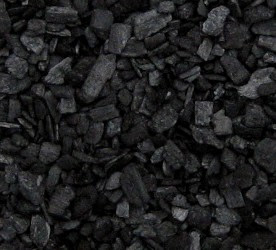
Carbon capture combined with utilization and storage has the potential to serve as a near-term option for CO(2) emissions reduction. CO(2) capture by carbon-based sorbents and CO(2) storage in geologic formations such as coal and shale both require a thorough understanding of the CO(2) adsorption properties in microporous carbon-based materials. Complex pore structures for natural organic materials, such as coal and gas shale, in addition to general carbon-based porous materials are modeled as a collection of independent, noninterconnected, functionalized graphitic slit pores with surface heterogeneities. Electronic structure calculations coupled with van der Waals-inclusive corrections have been performed to investigate the electronic properties of functionalized graphitic surfaces. With Bader charge analysis, electronic structure calculations can provide the initial framework comprising both the geometry and corresponding charge information required to carry out statistical modeling. Grand canonical Monte Carlo simulations were carried out to determine the adsorption isotherms for a given adsorbent-adsorbate interaction at temperature/pressure conditions relevant to carbon capture applications to focus on the effect of the surface functionalities. On the basis of the current work, oxygen-containing functional groups were predicted to enhance CO(2) adsorption in microporous carbon materials in the absence of water vapor, and the hydrated graphite was found to hinder CO(2) adsorption.
Como podemos leer en este artículo cada vez estamos mas cerca de la remediación ambiental, no obstante aun quedan muchos retos políticos, culturales y tecnológicos pero de granito en granito se podrá lograr un cambio.
Liu Y, Wilcox J. SourceDepartment of Energy Resources Engineering, School of Earth Sciences, Stanford University , Green Earth Sciences 065, 367 Panama Street, Stanford, California 94305, United States.



No comments:
Post a Comment